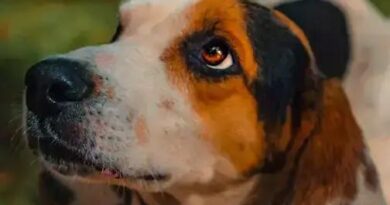O que é Regeneração
What is Regeneration?
Regeneration refers to the biological process through which living organisms can replace or restore lost or damaged tissues, organs, or limbs. In the context of dogs, regeneration can encompass various aspects, including the healing of wounds, recovery from injuries, and even the regrowth of certain body parts. This remarkable ability varies significantly among different species, and while dogs do not possess the same regenerative capabilities as some amphibians, they still exhibit impressive healing processes.
The Science Behind Regeneration
At the cellular level, regeneration involves complex biological mechanisms. When a dog suffers an injury, the body initiates a series of responses that include inflammation, tissue repair, and regeneration. Stem cells play a crucial role in this process, as they can differentiate into various cell types needed for healing. Understanding the science behind regeneration helps veterinarians and pet owners appreciate the remarkable resilience of dogs and the importance of proper care during recovery.
Types of Regeneration in Dogs
Regeneration in dogs can be categorized into several types, including wound healing, organ regeneration, and limb regeneration. Wound healing is the most common form, where the body repairs skin and underlying tissues after an injury. Organ regeneration, while limited in dogs, can occur in certain cases, such as liver regeneration after partial removal. Limb regeneration is largely absent in dogs, but they can adapt remarkably well to the loss of a limb through rehabilitation and prosthetics.
Factors Influencing Regeneration
Several factors influence the regenerative capacity of dogs, including age, overall health, and the type of injury sustained. Younger dogs tend to heal faster and more effectively than older dogs, whose regenerative processes may be slower. Additionally, a dog’s nutritional status and immune system play significant roles in determining how well and how quickly they can regenerate tissues after an injury.
Regenerative Medicine for Dogs
Recent advancements in veterinary medicine have led to the development of regenerative therapies for dogs. These treatments often involve the use of stem cells, platelet-rich plasma, and other biological materials to enhance the healing process. Regenerative medicine aims to improve recovery times and restore function in injured or diseased tissues, offering hope for dogs suffering from chronic conditions or severe injuries.
Common Injuries and Their Regeneration
Dogs are prone to various injuries, including cuts, fractures, and ligament tears. Each type of injury has its own regeneration timeline and process. For instance, superficial cuts may heal within days, while fractures can take weeks to months to fully regenerate. Understanding the specific regeneration processes associated with common injuries helps pet owners provide appropriate care and support during their dog’s recovery.
The Role of Nutrition in Regeneration
Nutrition plays a vital role in the regeneration process for dogs. A balanced diet rich in essential nutrients, vitamins, and minerals supports the body’s healing mechanisms. Protein is particularly important, as it provides the building blocks for tissue repair. Additionally, omega-3 fatty acids can help reduce inflammation, further aiding the regeneration process. Ensuring that a dog receives proper nutrition during recovery can significantly impact their healing outcomes.
Monitoring the Regeneration Process
Pet owners should closely monitor their dog’s regeneration process following an injury or surgery. Signs of proper healing include reduced swelling, decreased pain, and the formation of new tissue. Regular veterinary check-ups are essential to assess the progress and address any complications that may arise. Being proactive in monitoring regeneration can help ensure that dogs recover fully and return to their normal activities.
Challenges in Regeneration
Despite the remarkable regenerative abilities of dogs, challenges can arise during the healing process. Factors such as infection, poor blood circulation, and underlying health conditions can impede regeneration. Additionally, some dogs may experience complications that prolong recovery or lead to incomplete healing. Understanding these challenges allows pet owners to take preventive measures and seek veterinary assistance when necessary.
Conclusion on Regeneration in Dogs
Regeneration is a fascinating and complex process that highlights the resilience of dogs. While they may not possess the same regenerative capabilities as some other species, dogs have unique healing mechanisms that allow them to recover from injuries effectively. By understanding the science behind regeneration, the factors that influence it, and the role of nutrition and veterinary care, pet owners can better support their furry companions during their healing journeys.



